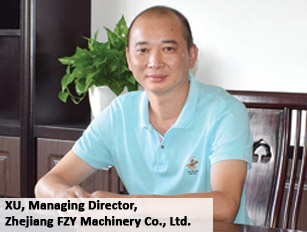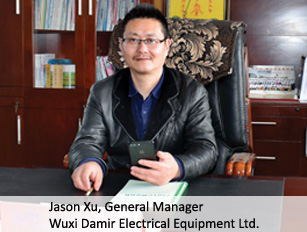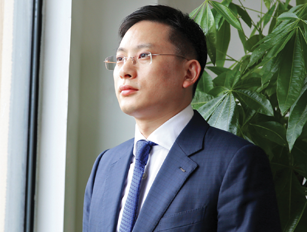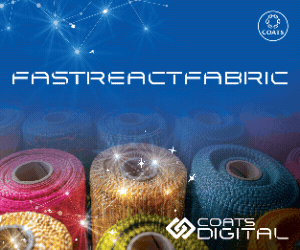 Our editor, Arvind Kumar, in an exclusive interview with Vasudevan LK, General Manager – LFP/IE, Epson India
Our editor, Arvind Kumar, in an exclusive interview with Vasudevan LK, General Manager – LFP/IE, Epson India
Which are the latest developments in digital textile printing technology?
Digital textile printing technology is constantly evolving to meet the increasing demand for short run jobs and made-to-order products. One of the latest developments is the ability to now print on all types of fabrics. Dye sublimation printing has become a popular method for printing on polyester fabrics. Further as technology has evolved, reactive printing on fabrics of cotton, viscose, modal, linen etc have become popular.
However, there has also been a recent addition to the technology with pigment ink printing, which has enabled printing on blended fabrics such as polycotton. These advancements in digital printing technology have opened up new possibilities for the textile industry and have allowed for more flexibility and creativity in design. Most importantly digital textile printing is much more eco-friendly and sustainable than conventional fabric printing and the concern surrounding the degradation of the environment is a key aspect being addressed by us now.
Tell us about the technology that you have launched recently? Which print head you are using and why?
Epson has recently launched a range of digital printers to help customers in their digital transformation journey. The new printers include affordable direct-to-fabric printer – the ML8000, which is designed to enable customers to start their digital printing journey. This printer can support up to 60,000 square meters of printing per month.
In addition to the ML8000, Epson has also introduced the F6430 series, an economical dye-sublimation printer available in both 4-color and 6-color configurations. In the 6-color configuration, customers have a choice of ink combinations, including LcLm, OrVi, or FYFP, depending on their primary application.
For customers with higher production requirements, Epson has launched the F10030 series, a production-level dye-sublimation printer with a maximum print width of 75 inches. This printer is available in both 4-color and 6-color configurations and allows customers to choose from LcLm or FYFP in the 6-color configuration. With a production capacity of up to 6,000 square meters per day (subject to conditions), the F10030 is effective for businesses that require high-volume printing capabilities.
Epson uses PrecisionCore print head technology in its product range because it offers several advantages over traditional print head technologies. One of the key advantages of this is its Heat-Free Printing Technology. Traditional print head technologies use heat to vaporize ink and create droplets, but PrecisionCore print heads use a micro-electromechanical system (MEMS) to create precise droplets of ink without the need for heat. This results in lower power consumption and faster print speeds, as there is no need to wait for the print head to heat up.
This technology also allows for greater control over the size and shape of ink droplets, resulting in higher-quality prints with sharper details and smoother gradations. Additionally, the modular design of PrecisionCore print heads allows for greater scalability, making it possible to create larger print heads with more nozzles for higher throughput.
These advancements are reflective of Epson’s philosophy of using efficient, compact and precise innovation to enrich people’s lives and help create a better world. With Sustainability at its core Epson’s focus will remain on reducing the environmental impacts of products and services and in supply chains, achieving sustainability in a circular economy, minimizing the environmental impacts and advancing the frontiers of the industry through creative, open innovation while contributing to international environmental initiatives.
What edge does it have over the others available in the market?
Epson provides the complete solution in digital textile printing which includes printers, inks, software, and print head. Everything is made, sold and serviced by us directly. Also, Epson has a wide range of digital printers including dye sublimation printers, direct to garment printers and direct to fabric printers which cover all types of digital textile printing. We have solutions for business at all stages of digital textile printing and this helps us bring expertise to the table that others cannot. We also have a long history in this business with our Mona Lisa printers that are tried and tested around the globe. We also have a long and illustrious history of innovation in the commercial and industrial printing category.
What are the important factors end-users should consider while making an investment in digital printing machines?
In the first instance the industry itself must realise that digital textile printing is now a necessity to safeguard our planet and the environment for future generations. Sustainable printing is no longer an option but an imperative. We are seeing a clear and growing basic mindset change among consumers, and this is great. Thereafter for the customer, what matters the most is whether the printer vendor provides a total solution along with clear guidance and detailed consultations. Additionally, besides printer purchases, customers are also realising that its very important to consider whether the brand has a strong presence in India, in terms of service and provides good after-service solutions. Also, availability of original inks should also be an important factor to consider while deciding on the printer.
How has the digital textile printing industry grown in the last year in India? (In terms of demand for machinery)
Over the past few years, the digital textile printing industry has posted robust growth, growing with an average CAGR of over 25 percent. The Indian digital textile printing market share in the global market is growing too, and as per our internal estimates accounts for approximately 9% of the total textile printing market.
India has posted this robust growth thanks to the promising performance of the textile sector and the developed textile mill clusters in the region. According to Future Market Insights research, India roughly prints 384 million metres of fabric digitally across over a thousand digital textile printing services. Factors like a growing concern for the environment, low cost, long-lasting dyes, and printing speed will further boost the market growth in the coming decade.
Business-wise, how was the year 2022 for you? How do you see the future?
In FY22, we posted 30 per cent growth over the previous year in terms of revenue. We aim to leverage this growth and further drive the digital textile market by enabling more businesses to adapt to more sustainable and environment friendly digital textile printing technology. We are extremely positive about the future and believe that our efficient, compact and precision technologies will advance the frontiers of industry and be at the forefront of achieve sustainability in a circular economy.
What are the new developments in inks? Would you like to share some suggestions on choosing inks?
Epson has developed a set of new inks like light cyan, light magenta, orange, violet and fluorescent yellow and fluorescent pink in dye sublimation technology to expand the color gamut and print applications. This helps customers reach out to new segments, diversify solutions and expand the business. Also, in Direct to Fabric printing, we have introduced 8 color pigment ink which provides a very wide color gamut in its class and helps the customer to move towards more environment friendly printing as the inks uses no water to print on fabric.
Do you think pigment ink is the future of digital textile printing?
Considering the sustainability benefits, pigment ink in digital printing will play a significant role as they present a more sustainable alternative to traditional analogue methods of fabric printing. In addition to reducing water consumption, the digital process involves fewer stages and is less complicated. Unlike analogue methods that require plate production, washing, and storage, digital printing generates minimal waste from used inks and allows for on-demand production, resulting in less waste.
Certainly, we foresee good potential for pigment ink usage in the coming years. Infact, Epson has already begun promoting the usage of pigment ink in digital textile printing. Our partnership with Japanese designer YUIMA NAKAZATO builds on the success of the company’s printing support for his couture and evolves the level of his creations to enable the low-impact production of a high-quality custom garment.
Nakazato’s artworks were digitally printed on fabric using pigment ink with Epson’s assistance. This type of ink can be used on any fabric and does not require any treatment other than thermal drying to fix it onto the fabric’s surface. Unlike dye inks, there is no need to steam or wash the fabric to remove excess ink, reducing water usage and shortening the production process.


















